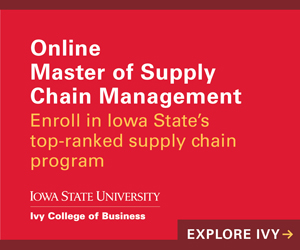Containers wanted

.floatimg-left-hort { float:left; } .floatimg-left-caption-hort { float:left; margin-bottom:10px; width:300px; margin-right:10px; clear:left;} .floatimg-left-vert { float:left; margin-top:10px; margin-right:15px; width:200px;} .floatimg-left-caption-vert { float:left; margin-right:10px; margin-bottom:10px; font-size: 12px; width:200px;} .floatimg-right-hort { float:right; margin-top:10px; margin-left:10px; margin-bottom:10px; width: 300px;} .floatimg-right-caption-hort { float:left; margin-right:10px; margin-bottom:10px; width: 300px; font-size: 12px; } .floatimg-right-vert { float:right; margin-top:10px; margin-left:10px; margin-bottom:10px; width: 200px;} .floatimg-right-caption-vert { float:left; margin-right:10px; margin-bottom:10px; width: 200px; font-size: 12px; } .floatimgright-sidebar { float:right; margin-top:10px; margin-left:10px; margin-bottom:10px; width: 200px; border-top-style: double; border-top-color: black; border-bottom-style: double; border-bottom-color: black;} .floatimgright-sidebar p { line-height: 115%; text-indent: 10px; } .floatimgright-sidebar h4 { font-variant:small-caps; } .pullquote { float:right; margin-top:10px; margin-left:10px; margin-bottom:10px; width: 150px; background: url(http://www.dmbusinessdaily.com/DAILY/editorial/extras/closequote.gif) no-repeat bottom right !important ; line-height: 150%; font-size: 125%; border-top: 1px solid; border-bottom: 1px solid;} .floatvidleft { float:left; margin-bottom:10px; width:325px; margin-right:10px; clear:left;} .floatvidright { float:right; margin-bottom:10px; width:325px; margin-right:10px; clear:left;}
A 28 percent increase in exports in the first quarter of the year from the year-ago period sounds like a good thing for Iowa businesses. But companies shipping their products outside the United States are facing a snag. A shortage in shipping containers in Iowa is causing delays in getting their goods overseas.
As the dollar has dropped in value in recent months, foreign countries have become more attracted to U.S. goods, boosting exports 17 percent nationwide in the first quarter of the year. Iowa ranked 28th among all states in exports in that quarter, but it ranked 13th in growth of exports, according to figures from the Iowa Department of Economic Development.
Meanwhile, many containers being shipped to the United States are not making their way inland. Though the situation has improved from a time when more than 80 percent of all containers shipped from China returned empty, the Midwest still faces a problem, especially as exports continue to rise, said Scott Teasdale, co-owner of Bettendorf-based Quad City Port Services Inc., who will be one of the panelists at the Iowa Agribusiness Export Partnership’s roundtable, “Where Have All the Containers Gone?” on Oct. 3.
Experts say most shippers don’t like to send their containers inland because of the additional expense, the risk that they could lose their assets and the delay in returning those containers overseas. The containers that are shipped in on railcars are going to hubs around Iowa, including Chicago, St. Louis, Omaha and Minneapolis, making it difficult for Iowa businesses to secure containers without having to truck their products to a hub.
Being in the business of trying to coordinate access to sea containers, mostly for small to medium-sized clients, Teasdale said, “we certainly have found that our ability to have an impact on what’s going on has been limited.”
He has encouraged his clients to try to book containers as far in advance as they can. However, this can lead to a situation where a manufacturer isn’t ready when a container arrives and can’t fill it, which can frustrate shipping companies.
Those in the field don’t think this situation has hampered trade too much, but they say it has delayed shipments, causing business owners to become frustrated. One project Teasdale worked on this summer should have taken a month to line up resources for shipping, he said, but in this case, it took three months.
“My experience or sense of what people are feeling is a little frustration and concern about what’s going on,” he said. “It definitely hasn’t stifled enthusiasm.”
Alternatives, such as shipping by air, are more expensive, especially with rising fuel prices. And if a company has to truck a product to a shipping container, the product may not be as secure as if it is handled only once when it is packaged into the container.
But, said Clyde Walter, an Iowa State University professor of logistics and supply chain management and roundtable panelist, “most companies are not going to turn away business except as a last resort, and if they have to take another alternative, shipping out by truck, then they will.”
With soybeans ranking No. 1 for containerized grain exports last year, Mike Steenhoek, executive director of the Soy Transportation Coalition, said this has become an issue for his industry.
Soybean exporting has grown as a rising middle class worldwide demands more protein in their diet. At the same time, people are placing more specific demands in their soybean orders, wanting smaller quantities and handpicking farmers or regions they want them from. Containerized shipping is more effective in handling these types of orders than bulk shipping, Steenhoek said.
Most ocean vessels currently under construction or ordered for construction are container ships, versus bulk vessels, and the Panama Canal is being enlarged, which could help boost containerized shipping, Steenhoek said.
A shortage of containers is creating a greater need among businesses to communicate with one another about their shipments.
“At present,” Teasdale said. “I’m not aware of any kind of system or forum that exists to attempt essentially to allow dialogue between importers and exporters in Iowa to figure out and be able to gain some value or understanding in who’s got containers.”
Walter also suggests attaching a GPS device to each container to help shippers keep track of their containers when they ship them inland. A report he completed several years ago suggested a computer-based information-sharing terminal would help coordinate container shipments as well.
With the U.S. rail system nearing or at capacity and the expiration of a federal tax credit for investing in new shortline or regional rail lines last year, railroad companies don’t have as much incentive to expand their infrastructure, Steenhoek said. This has become a more drastic situation in Iowa with the recent flooding that destroyed some lines.
But experts say the issue of getting containers really came to the limelight recently as exports have boomed. “I’ve seen lots of articles on it expressing concern,” Walter said, “and so I expect adjustments are in the works.”







